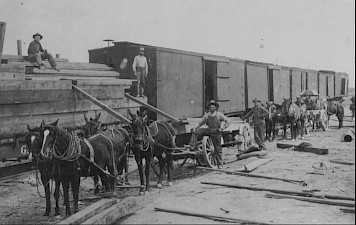A Public Solution to Problems with Private Rail
The rail industry has alienated just about everyone these days, as it has a long history of doing so, including rail workers, passengers, shippers, trackside and rail yard communities, state and local governments, and politicians from both political parties.
Over one hundred years ago, the U.S. rail system was briefly nationalized due to its inability to efficiently move the nation's freight and passengers during World War I. This experience was so successful that millions of Americans, including rail workers and their 16 unions, called for continued public ownership once the war ended in the form of the Plumb Plan. Today, that proposal, having been previously voted down by Congress in 1920, is being revitalized to galvanize public support for recovering the critical transportation infrastructure for the benefit of all.
Railroads' current profit-driven operation fails to serve the majority, jeopardizes safety, and ignores the well-being of workers and communities, as demonstrated in East Palestine, Ohio.

The Solution: Reviving the Plumb Plan
To address safety concerns, reduce climate change, and reduce fossil fuel transportation, a coalition of labor, small business, farmer, intellectual, environmental, and social justice organizations seeks to educate lawmakers and the general public on the benefits of public rail ownership.
Public control of railways will modernize infrastructure, electrify locomotives, and promote sustainable, low-carbon transit. This approach not only alleviates congestion and pollution but also creates job opportunities and enhances accessibility. Additionally, transitioning to electric railroads facilitates clean energy transmission and ensures safer transportation practices.
Our campaign echoes the principles of The Plumb Plan League, advocating for public involvement in decision-making processes to prioritize safety, passenger needs, and environmental concerns. Ultimately, this is a people's campaign that seeks to reclaim railroads as a vital public asset, benefiting individuals, goods transportation, and the environment alike.
Rail is publicly owned in countries throughout the world. It can be here too. The nation's highways, waterways, airports, and seaports are publicly owned and administered. Perhaps our railroads should be too.
Interested in getting more involved, click here.